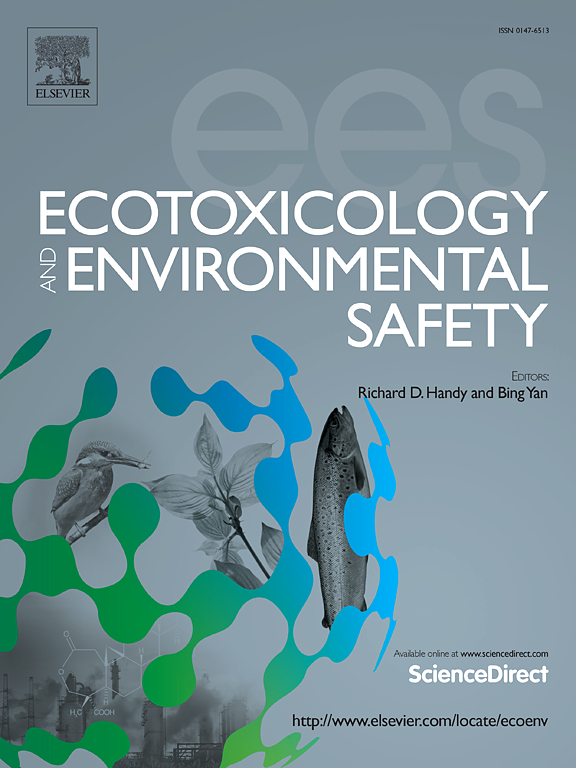瑞士欧亚猞猁(猞猁)的微量元素保护评价
IF 6.2
2区 环境科学与生态学
Q1 ENVIRONMENTAL SCIENCES
引用次数: 0
摘要
欧亚猞猁是瑞士的一种濒危物种,面临着交通事故、非法捕杀和遗传多样性低等主要威胁。然而,微量元素(TE)暴露对其保护的影响仍然知之甚少。作为主要以野生动物为食的顶级捕食者,这种动物可能会接触到非必需的TEs,包括铅和汞,即使浓度很低也可能有毒。此外,过量接触或缺乏必需的te(如铜或锌)会对健康造成不利影响。为了解决这一差距,我们分析了瑞士国家健康监测计划中122个人的肝脏样本,测量了八种te的浓度:四种非必需te(砷、镉、铅和汞)和四种必需te(铜、铁、硒和锌)。浓度与其他自由放养的猞猁种群一致,低于哺乳动物的毒性阈值,同时也高于必需TEs的缺乏水平。对于一些te,它们随年龄而变化,但不受性别、时间或环境变量的影响。此外,我们使用身体状况评分来检验TE浓度与欧亚猞猁健康之间的关系。较低的身体状况评分与较高的非必需和必需TE浓度相关,可能反映了健康状况不佳影响TE积累,而不是直接的毒性作用。总的来说,我们的研究表明,目前的TE暴露并没有显著威胁到瑞士的欧亚猞猁种群,这为保护工作和长期健康监测提供了新的见解。本文章由计算机程序翻译,如有差异,请以英文原文为准。
Evaluating trace elements as a conservation concern for Eurasian lynx (Lynx lynx) in Switzerland
The Eurasian lynx, an endangered species in Switzerland, faces major threats including traffic collisions, illegal killing, and low genetic diversity. However, the impact of trace element (TE) exposure on its conservation remains poorly understood. As a top predator primarily feeding on game species, this felid can be exposed to non-essential TEs, including lead and mercury, which can be toxic even at low concentrations. In addition, overexposure to or deficiency of essential TEs such as copper or zinc can cause adverse health effects. To address this gap, we analysed liver samples from 122 individuals archived in the Swiss national health surveillance program by measuring the concentrations of eight TEs: four non-essential TEs (arsenic, cadmium, lead, and mercury) and four essential TEs (copper, iron, selenium, and zinc). Concentrations were consistent with those reported in other free-ranging Lynx populations and remained below toxicity thresholds reported for mammals, while also being above deficiency levels for essential TEs. They varied with age for some TEs, but not with sex, time or environmental variables. Additionally, we used a body condition score to examine the relationship between TE concentrations and Eurasian lynx health. Lower body condition scores were associated with higher concentrations of both non-essential and essential TEs, likely reflecting poor health affecting TE accumulation rather than a direct toxic effect. Overall, our study suggests that the current TE exposure does not significantly threaten Eurasian lynx populations in Switzerland, providing new insights for conservation efforts and long-term health monitoring.
求助全文
通过发布文献求助,成功后即可免费获取论文全文。
去求助
来源期刊
CiteScore
12.10
自引率
5.90%
发文量
1234
审稿时长
88 days
期刊介绍:
Ecotoxicology and Environmental Safety is a multi-disciplinary journal that focuses on understanding the exposure and effects of environmental contamination on organisms including human health. The scope of the journal covers three main themes. The topics within these themes, indicated below, include (but are not limited to) the following: Ecotoxicology、Environmental Chemistry、Environmental Safety etc.

 求助内容:
求助内容: 应助结果提醒方式:
应助结果提醒方式:


